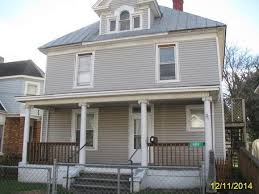
If you live in Southeast Roanoke City and you happen to notice people snapping pictures of your house and writing on a clipboard don’t be too alarmed – it’s probably just an “historic architectural survey” that Hill Studios will be conducting for the city. The goal – to catalog homes typically built over a century ago for Roanoke’s then-booming railroad industry, for possible inclusion on the National Historic Register and the Virginia Landmark Register.
Roanoke City planner Maribeth Mills describes the Belmont neighborhood boundaries – specifically for this survey, as the Norfolk Southern train tracks to the north, 11th Street to the east, Murray Avenue to the south and I-581 to the west. “That follows the historic boundaries of that neighborhood when it was originally laid out back in the late 1800’s,” said Mills, “directly to support the railroad.”
When the Shenandoah Railroad merged with Norfolk & Western a new influx of employees that came to Roanoke needed homes said Mills, that spurred construction in Southeast Roanoke. The Belmont Land Company laid out lots and sold them to developers in the late 1800’s. When American Viscose Corporation opened in 1910 that also spurred more housing construction in the Belmont area.
A grant from the Certified Local Government programs operated by the Virginia Department of Historic Resources that was awarded to the city’s Department of Planning, Building and Development will pay for the survey. Recently members of the Belmont Neighborhood Association heard about it at their regular monthly meeting.
A survey team will look at houses in the area, note when they were built, where they are situated on the lot and take pictures, said Mills. Then they’ll research those houses on the Virginia Department of Historic Resources database. Each structure will be documented, “hopefully to nominate it [for the Historic register].” That would be somewhere down the road, said Mills. A small survey done by Hill Studio in 1999 determined that the Belmont neighborhood was a good candidate for historic status.
Being added to the federal and state registries is “purely honorary,” noted Mills, but it could also make those houses 50 years or older eligible for historic rehabilitation tax credits that could be used for renovations and redevelopment. It is not the same as a local historic district – such as in Old Southwest – where the Architectural Review Board sets design standards for any exterior work performed.
“It helps us to understand what type of historic resources we have in the city and allows us to have better comprehensive planning decisions that are more sensitive to the significance of neighborhoods,” said Mills. The historic designation would mean more environmental reviews must be completed before new development – or roads – could encroach on that area as well.
“Most importantly it helps instill neighborhood pride,” said Mills about what the ultimate outcome of the historic survey might yield, “an awareness of the heritage of that neighborhood.”
The city wanted to keep residents in that area – some already sensitive to what they see as expansion at the Rescue Mission – in the loop. “We want to make sure the [Belmont] neighborhood is informed,” said Mills. Be looking for those cameras and clipboards. There’s also information on line at roanokeva.gov/pbd; then click on the Belmont Historic Architectural Survey link for more details.
By Gene Marrano


